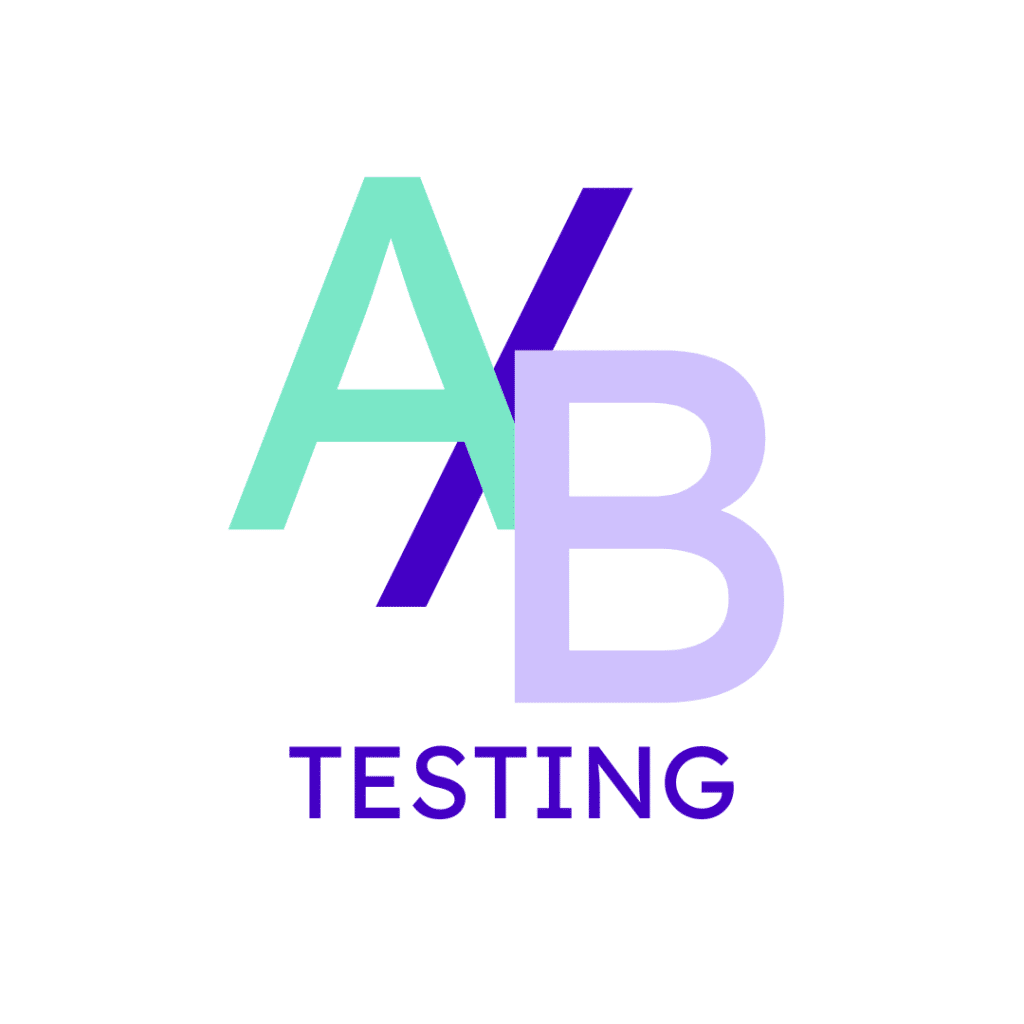Have you ever found that the tiniest change on your website can bring about a huge increase in user engagement? Like a time when you moved one button a few pixels to the left and suddenly saw an influx of conversions? That’s A/B testing in action!
The most successful web designers know that A/B testing can make all the difference when it comes to optimizing user experience. Let’s talk about the basics of A/B testing, how it works, and why it’s crucial for creating a positive user experience.
What Is A/B Testing?
A/B testing (also known as split-testing or bucket testing) is a method of comparing two or more versions of a webpage, website, app, or even a specific element on the page to see which one performs better in terms of the desired outcome.
To make this comparison, different versions of the experience are presented to users at random, and statistical analysis is used to determine which variation performs better for a given metric.
How Does A/B Testing Work?
In its simplest terms, A/B testing involves a process of trial and error – also known as hypothesis-driven development. You start by making a hypothesis about the user experience, such as “moving the button to the left will increase conversions”.
Next, you create two versions of the same webpage or app screen – A and B. Half of your users are shown version A, and half are shown version B, and their actions on each page are measured. Finally, you use a statistical engine to analyze the results and determine which version performed better.
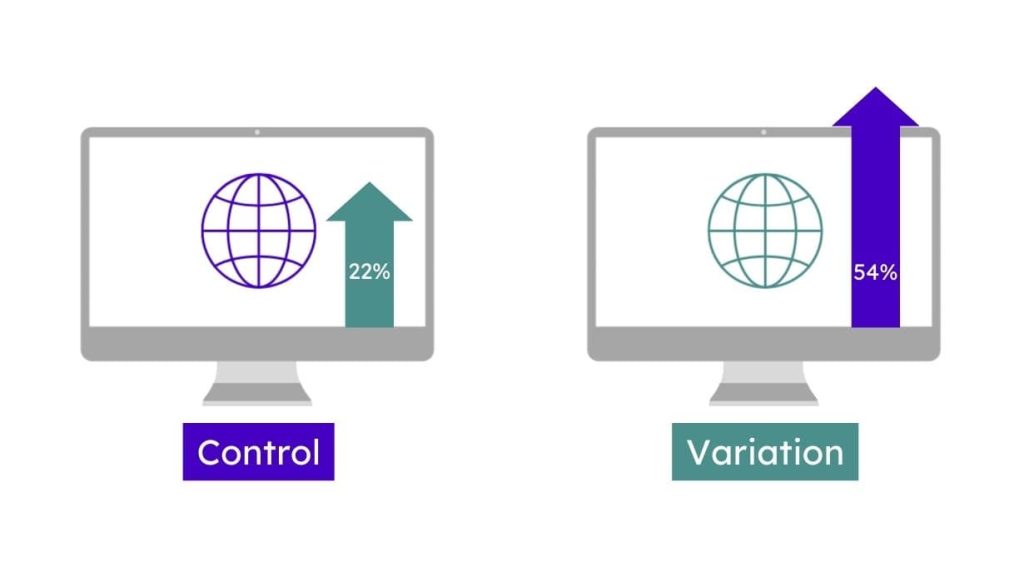
It’s worth noting that the different versions can range from minor tweaks, such as slight color changes or a change in headline, to major redesigns.
For instance, you could test the impact of adding a prominent call-to-action button or changing a headline. Other common examples include testing different forms of copy, images, content placement, and other design aspects that could influence user behavior.
The idea is to find the exact changes that can make a big impact on user engagement.
Why Is A/B Testing Important?
In today’s digital world, creating an exceptional user experience has become a key factor in the success of any website or app. A/B testing is a powerful tool that can help you uncover what resonates with your users and optimize their experience. Here are its benefits.
1. It Can Boost Engagement
If you’ve been having the case of the “fading user engagement” blues, A/B testing can help you understand what resonates with your users and how to design experiences that will keep them coming back.
That’s because, with A/B testing, you can make even the slightest tweaks to elements such as the headline, CTA language, colors, images, or content layout and track how users respond. You can experiment with these changes one at a time, making it easier to identify which tweaks are successful and which should be abandoned.
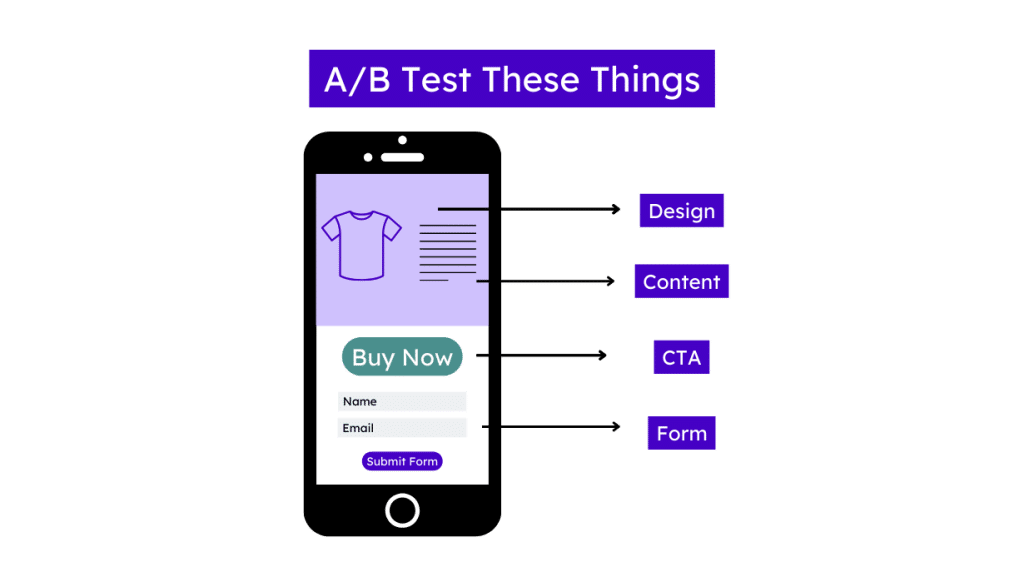
Then, when you update the experience with the “winning” changes, you’re improving your user experience in aggregate, paving the way for more user engagement.
2. It Empowers You to Create More Compelling Copy
The words you choose to communicate your message can make or break your user experience. You may know that already, but it’s always a question of, “well, how do I know if it’s working?”
The answer is A/B testing! Using A/B testing to test different copy variations can help you identify the most impactful words that truly make a difference in user experience. This isn’t only powerful for your existing sales page and website copy, but it will also help you create better ad copy for future campaigns.

Simply, A/B testing can help you weed out language that doesn’t work and replace it with compelling words that truly speak to your users. You’ll be surprised at how the difference can sometimes be quite dramatic!
3. It Gives You an Unbiased Opinion
We all tend to have our own biases and preferences when it comes to the design of a website or app. After all, you’ve put your heart and soul into creating the best user experience possible (in your opinion).
But, at the end of the day, what matters most is how our users feel about their experience on our pages. A/B testing bypasses this dilemma by giving you an unbiased opinion. You can test different page versions and see which resonates with users. The data will speak for itself, giving you a clear answer as to which design works best.
So instead of relying on intuition or guesses, you can use data from actual users to make informed decisions.
4. It Can Increase Conversions
Websites and apps are designed to drive action – whether that’s signing up for a newsletter, downloading an app, or making a purchase. A/B testing can help you identify which changes in design, content, and functionality have the biggest impact on conversion rate.
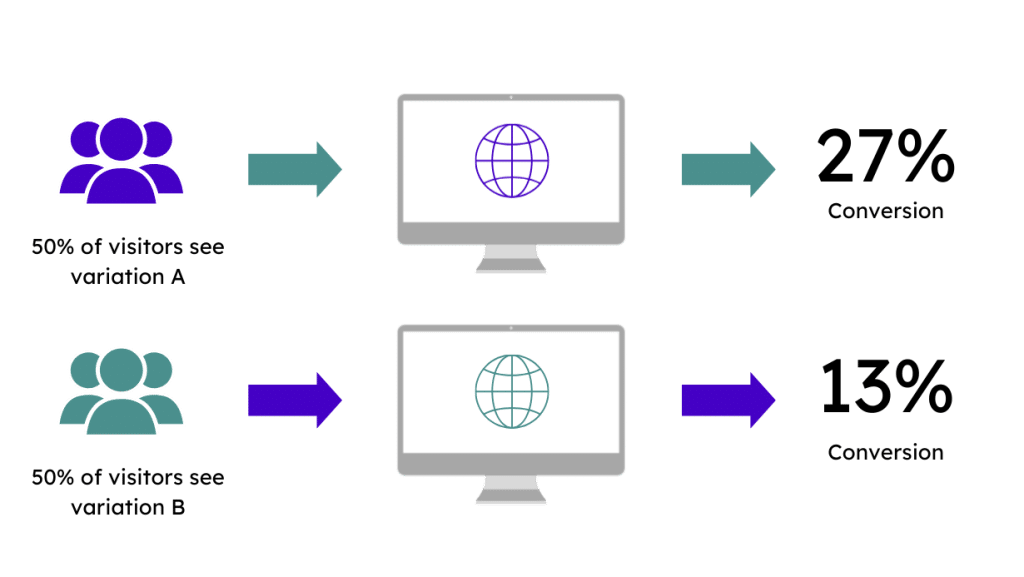
While you’re doing your A/B testing one page at a time, you can also use multivariate testing to measure multiple variables simultaneously. This technique is especially useful for high-priced pages like product and services pages since it helps you understand which changes result in more purchases.
Even if you stick with A/B testing for a single page, you can still use the learnings to apply changes to other pages with similar user experiences. When you do this, you can expect to see a lift in conversion rate across all pages.
5. It Will Help Reduce Your Bounce Rates
Your bounce rate is the percentage of visitors who leave a page after viewing only one page.
High bounce rates indicate that your users aren’t finding what they need on your page and are leaving in frustration. A/B testing can help you understand why they’re bouncing, so you can make tweaks to improve user experience.
For example, if you A/B test different versions of the same page with different calls-to-action, you can quickly identify which CTA is more effective in encouraging users to navigate further into your site. You can then use those learnings to create an overall better experience for all visitors and reduce your bounce rate.
Similarly, you can also use A/B testing to test different page designs and content variations to identify the most effective ones in engaging users.
6. It Gives You Quick Results
Who isn’t impatient when it comes to their site? We expect results to come fast, and A/B testing can help you get those results quickly. You can usually see results in less than a week or two by setting the split test parameters correctly.
You still need to be patient enough to run the test for its full duration (uninterrupted) so that you can get reliable data from it. But, the turnaround time is usually much faster than most other optimization methods.
In addition, you can also use smaller tests to quickly identify what works and doesn’t work so that you can focus on bigger changes later on. This way, A/B testing can help you move forward at a much faster pace and achieve your desired results.
7. It’s Versatile and Can Be Used For Anything
A/B testing is incredibly versatile and can be used to test almost any website or app element. From content, layout, navigation structure, calls-to-action, and more, you can test anything that impacts user experience.
Plus, A/B testing isn’t just limited to website pages. You can also use it to test forms, emails, ads, product descriptions, and more. Basically, you can use A/B testing for anything you want to experiment with.
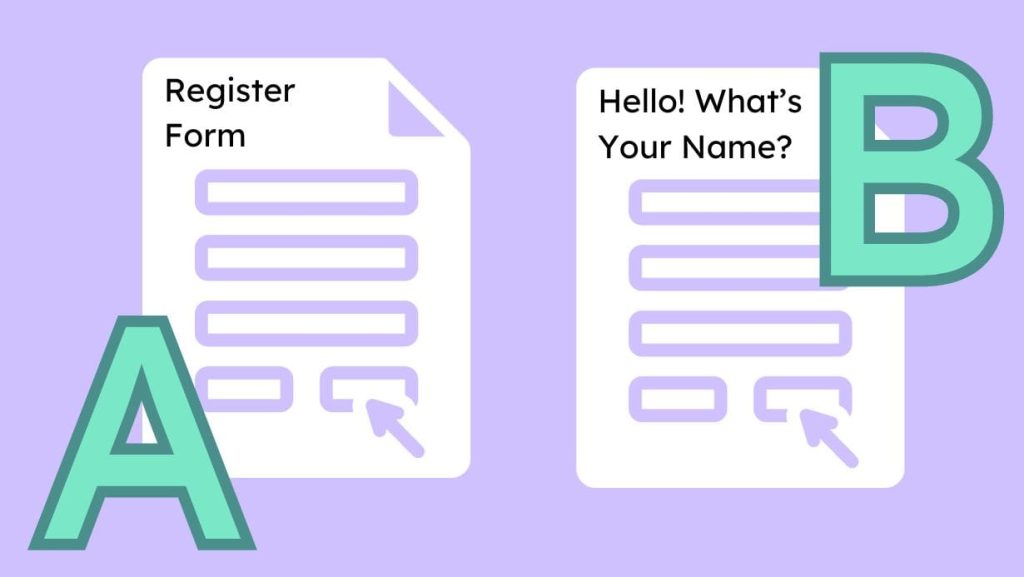
And when you combine the data from multiple tests of different elements, you can get a full picture of user behavior and preferences so that you can create an overall better user experience.
8. There’s Barely Any Risk With It
A/B testing carries minimal risk since it’s easy to set up – all you need is an A/B testing tool. Plus, you can always revert back to your original version if the changes that you made don’t work out.
That’s why many companies use A/B testing as their go-to method for experimentation instead of taking a more drastic route, like completely redesigning a page and offering it once and for all.
The biggest risk with A/B testing is just not having enough traffic. If you don’t have enough visitors to your page, you won’t be able to get reliable results from your test. That’s why it’s important to plan ahead and make sure you have enough traffic coming to your pages before starting any test.
9. It Helps You Stay Ahead of Your Competition
A/B testing is an effective way to stay ahead of the game, especially since your competitors are probably using it too.
If you use A/B testing, you can easily identify what works better for visitors so that you can create a better user experience than your competitors. The more engaged your visitors are, the greater chance you have of converting them.
Plus, A/B testing also helps you identify weaknesses in your competitors so that you can focus on areas where they are lacking and capitalize on that.
10. It’ll Help You Create Better Experiences Overall
At the end of the day, that’s what A/B testing is all about – creating better experiences for your visitors. By running tests and collecting data, you can easily identify what works best for your visitors.
From there, you can make changes to create a better user experience so that visitors stay on your page longer and are more likely to convert. Plus, you can use the data that you collect from A/B testing to make better decisions in the future so that you’ll continue to make improvements over time. It won’t be a one-time thing.
Let’s Get Testing!
A/B testing is an effective, low-risk way to make sure that you’re getting the most out of your website or app. Imagine how much more successful your website could be if you had reliable data to back up every decision that you made!
So, what will you start with? Start running some tests today, and get ready to see the results! Who knows – maybe A/B testing will make all the difference in your success! And if you need help, we’re here to make the process easier for you. Contact our team at ShiftWeb, and let’s get started with tweaking your website to perfection!

